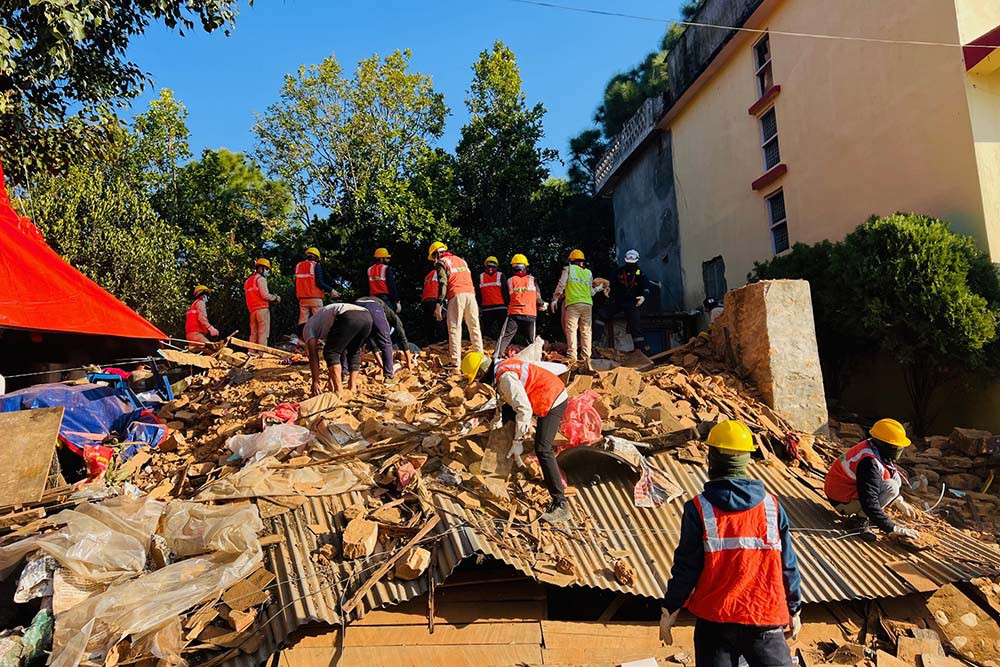
It has been 22 years that Nepal and India inked a pact in the Mahakali Treaty that includes the development of the Pancheshwar Multipurpose Project (PMP) with the promise of mutual benefit of two nations on electricity, irrigation and flood control. However, the project has yet to deliver any substantive results and there has been little progress in the execution of the project. Both countries are yet to reach consensus regarding sharing of water resources.
History
Prime Minister Sher Bahadur Deuba during his first premiership had signed the treaty with then Prime Minister of India P. V. Narasimha Rao on February 12,1996. The country passed through an armed conflict and long political transition almost for two decades after the treaty was signed with India. As a result, PMP could not acquire any substantive progress. PMP was given top priority from the political leadership of both countries. Additionally, both countries agreed on developing Pancheshwar Development Authority (PDA) and finalise the detailed project report (DPR) within six months of the treaty being signed. However, physical attack on project staff and technicians at the field during Maoist insurgency forced to a stall on the process of finalising the DPR. The meeting of Nepal India Joint Commission on Water Resources (JCWR) meeting held from 1-3, October 2000 has also emphasised implementation of the Mahakali Treaty and the issue was repeatedly discussed in a series of JCWR meetings. Following the end of the armed conflict, Pushpa Kamal Dahal led government have started negotiation with India. The third round of meeting of JCWR held in Kathmandu agreed to develop the authority and finalise DPR of the project, according to former Energy Secretary Shankar Prasad Koirala. The forth meeting of JCWR held in Delhi was supposed to conclude the guidelines of authority among other crucial issues, but, then leadership did not handle the issue fearing controversies. The fifth meeting of JCWR organised in Pokhara in November finalised the guidelines of authority and it was endorsed from the cabinet of both sides but each side failed to make consensus on: whether the headquarter of the authority should: be set up in Mahendranagar (Nepal) or India, tariff exemption of the equipment, goods used in the project and providing recognition to staff and authorities of the project as diplomatic mission. Prime Minister Narendra Modi, during his first official visit to Nepal signed the guidelines of the Pancheshwar Development Authority and ToR in August 2014. It brought a ray of hope on the implementation aspect. The Pancheshwar governing board was formed in September comprising six directors (three from each country), CEO and additional CEO in September 2014. The early finalisation of DPR of this project was a primary issue discussed during the latest visit of Prime Minister Sher Bahadur Deuba in the last week of August 2017. In a joint communiqué issued by both prime ministers, instructions to concerned officials of both sides were made to finalise the DPR within a month.Controversies
Many issues remain unsettled.Initially, around USD 2.98 billion was estimated to execute the project, however, experts say the cost may overshoot USD 4 billion along with a time overrun. Nepal-India both agreed to inject the cost based on the benefits they share, according to Dinesh Kumar Ghimire, Spokesperson of the Ministry of Energy. Though Nepal and India have agreed on sharing 50:50 electricity generated from the PMP, each country has its own stance regarding the benefits of irrigation canals and flood control. Out of the total project cost, 75 % goes to electricity generation, 24 % to irrigation and 1% for flood control. Nepali side has made it clear that it will share half of the cost of electricity generation only, which is 37.5% of the total project cost. However, according to Indian sources, Nepal should bear 40 % of the total project cost. Pancheshwar Multipurpose Project will have huge irrigation benefits for India.Nepal will benefit from irrigation aspects in 93,000 hectares, whereas India gains 1.6 million hectares of land. Another crucial issue is sharing of water resources. India wants to halve the water deducting the existing water flow through lower Sharada Barrage. But Nepal has asked India to compensate Nepal from electricity of Pancheshwar Project if India is willing to keep the existing water flow unchanged from lower Sharada Barrage. The project is going to be built on Mahakali river and should halve the water sharing must be done without any conditions, according to Ghimire.Capacity on ‘firm energy’
The team of experts formed by the Pancheshwar Development Authority met in New Delhi in the first week of September after the Prime Ministers of both countries agreed to finalise DPR within a month. Analysing the hydrological series from 1962 to 2012, the meeting of team of experts agreed to fix the capacity at 925MW. Earlier, WAPCOS Ltd, a government of India undertaking, had submitted a study report that the firm power can be fixed at only 725 MW. Nepal had reservations on the study submitted by WAPCOS. ‘Firm Power’ means that quantum of energy can be generated anytime in a year, according to Ghimire. Likewise, total installed (rated) capacity of the project will be 10,000 gigawatts/hour, which means above 5,000 MW. Controversies related to the total installed capacity of the project has ended after the meeting of the team of experts. Ghimire says that discussion on technical aspect of DPR was one of the major achievements. Until and unless the Indian side does not agree to divide water equally and keep its stances on lower Sharada it will be difficult to take forward the project. As per Ministry of Energy sources, “India must be flexible to compensate Nepal from electricity if India wants to keep the existing water flow in lower Sharada.” Following the meeting held in Delhi in September last year there has not been any progress regarding the project. Dinesh Kumar Ghimire, Spokesperson of the Ministry of Energy has said that the discussion on cost sharing will be initiatied only after the finalisation of technical aspects of DPR. The environmental impact assessment (EIA) of the project has already been carried out. As per the approved EIA report, 21,621 people will be displaced from the dam area at Pancheshwar of Baitadi district of far-west Nepal and 1,144 people from the reregulating dam in Rupaligad 25-km south from the main dam. Dam area of the project will inundate 3,738 hectares of forest area and 2,100 hectares of arable land. Likewise, 348 hectares of Rupaligad reregulating dam area will be submerged, as per the report.Missed opportunities
As the India-Nepal undertaking is taking more time for implementation, cost of the project is rising each year.If the project was executed envisioned, it would have brought huge transformations in the power-starved areas of Nepal and North India. Reliable electricity supply would have given opportunity for industrialisation on both sides, livelihood improvement, opportunity to raise productivity along with irrigation facility. Delay in the project has hade huge socio-economic cost that must be analysed.
Published Date: February 19, 2018, 12:00 am
Post Comment
E-Magazine
RELATED Feature





